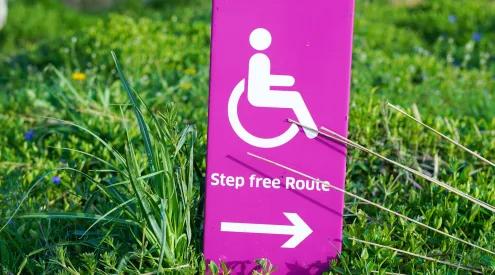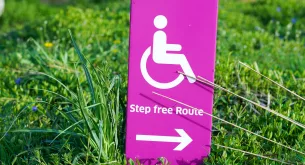Hiking is a fantastic way to connect with nature as you improve your physical fitness and enjoy some fresh air.
However, choosing the right trail is crucial for a safe and enjoyable experience, especially if you’re new to hiking or have specific fitness goals.

Man with backpack and hiking poles got to the top of Africa – Mount Kilimanjaro and looking at the beautiful bright sunny sunrise above the Meru mountain (Picture: Unsplash)
Here are a few tips to help you choose the perfect hiking trail based on your fitness level:
Assess your fitness level
Before hitting the trails, it is essential to evaluate your current fitness level. Consider factors such as cardiovascular endurance, strength, stability and how experienced you are.
Have you hiked before or are you a beginner? How well can you sustain physical activity? Do you have the strength to manage uneven terrain?
Considering all these factors will be very helpful in guiding you towards choosing a trail that is perfect for you.
Have an understanding of trail ratings
Most hiking trails are rated based on their difficulty. As such, it helps to familiarize yourself with the following common classifications:
– Easy: These trails are typically flat, well-marked and suitable for beginners. They often have minimal elevation gain and are perfect for families or those looking for a leisurely stroll.
– Moderate: Moderate trails may include some elevation gain, uneven terrain and sometimes longer distances. They are suitable for hikers with a basic level of fitness and some experience.
– Difficult: These trails are challenging, often featuring steep inclines, rocky paths and longer distances. They require a good level of fitness and experience, as well as proper gear.
ALSO READ: 10 things you should never do on a hike
Research trail conditions
Before you head out, check the trail conditions. Factors such as weather can significantly impact your hiking experience. For example, rain can make trails muddy, slippery and challenging to navigate.
Look into information platforms such as websites, local hiking groups and park services for updates on trail conditions.
Consider length and elevation
When choosing a trail, pay attention to both its length and elevation gain. If you are new to hiking, start with shorter trails. As you build endurance, gradually increase the distance.
Elevation gain refers to the total vertical distance you will climb. A trail with a gradual incline is more manageable than one with steep ascents. As such, beginners should aim for trails with lower elevation gain.
Embrace gradual progress
As you gain experience and confidence, you can gradually increase the difficulty of your hikes.
Challenge yourself with longer distances, steeper inclines and more rugged terrain.
Adopting this progressive approach will help you build strength and endurance, while also minimizing the risk of injury.
Know your limits
Ultimately, it is essential to listen to your body and to know when to turn back. If you are feeling fatigued, dizzy or unwell, it is better to cut your hike short than to push through and risk injury. Always hike with a buddy if possible, and let someone know about your plans.
Follow us on social media for more travel news, inspiration, and guides. You can also tag us to be featured.
TikTok | Instagram | Facebook | Twitter
ALSO READ: Safety Tips for Urban Hiking

















